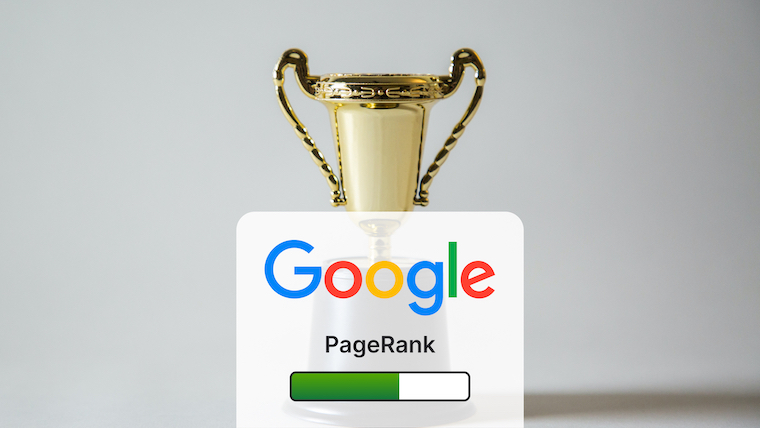Written by Paolo Gorgazzi
Index
Have you heard of link building marketing but don’t know exactly what it is? In this post we explain the fundamental concepts about this marketing technique so important for SEO.
What content should I create to receive quality links and improve my popularity?
What strategies exist, what are the risks and what are the tools to achieve my objectives?
These are some of the questions we have answers to in this post.
What is link building?
Link building is one of the most important aspects of off-page SEO. It consists of the generation and achievement of external links to our website, that is to say, we want other domains to talk about our content and, most importantly, we want other domains to talk about our content, create valuable links to our site.
The ultimate goal of this action is to increase the authority and popularity of our portal in the eyes of users and, above all, of Google bots, which are in charge of classifying the contents of our website in better positions in the SERPs (the search engine results page).
In short, when we talk about link building we refer to all the actions that we carry out to get our website to be linked by third parties with authority and thus increase our web popularity. The more quality links we get to our website, the more we will increase our popularity and, therefore, our positioning.
A small link building dictionary
To understand how different link building strategies work it is appropriate to first understand a number of terms. Let’s see what they are.
Backlinks
A backlink is a link from an external domain pointing to our website. We recognize it in the HTML code of a page by this definition <a href=”https://dominio.com”>Anchor text</a>.
When a user is on a page and finds a link, clicking on it will navigate to the final content it points to.
Let’s see in detail the different elements that links can have:
- URL: or destination page where the link takes us.
- Anchor text: it is the text that contains the link and the most important SEO element, for this reason we will see it in more detail in a section of this post.
- Title: it is recommended that the links include a title attribute, which explains to the user where it will take him/her to. It is recommended that they be descriptive, clear and in the format “Go to + [enlace]”, “Learn more about + [enlace]” or “Open [enlace] in a new window”. Do not make it too long, the wording should be natural, directed to the user, not to the SEO. When we hover the mouse over the link, a small pop-up text will appear, that is the link title
- Images: it may be the case that the link is placed in an image. In this case, clicking on it will take us to the indicated web page. To preserve the value of the text that functions as anchor text, it is vital to include an alternative text, alt attribute, descriptive of the image content. In addition, it must be relevant to the content to which it links, we must include the target keyword of the page to which we link and write it naturally, being precise, explanatory and coherent.
We can find backlinks generated naturally when another domain links from one of its pages to one of our content because it finds it relevant and interesting for its users.
When we talk about naturalness, we mean that the link should not follow an automatic linking pattern nor should the relationship between the linked content and the source page be discordant. We must not forget that web pages must be targeted to users to meet their need for knowledge and be relevant to what they want to find. Therefore, when doing link building We link to an external page, it must be because the link provides relevant information for the user and that in turn it is consistent with the content and subject matter that is being addressed and expected by the person on the other side of the screen.
As it could not be otherwise, there is the purchase of links, that is, domains that offer to link us from their pages in exchange for money.
We must be especially careful with this type of actions and backlinks, because if we do not follow ethical guidelines, Google bots could penalize us (we will talk later in this post about the different penalties linked to link building).
Anchor text
The backlinks must be coherent with the content where they appear and link through an anchor text, natural and consistent with the content of the landing page. For example, if you are on a page about computers, in an article that reviews a tablet, it makes no sense to include a link with the anchor text “cheap flights” to a page selling airline tickets.
Let’s take a closer look at what the anchor text is: it is the word or words visible to users in the hyperlink. It is an essential factor to optimize your link building strategy because it gives a powerful and relevant signal to the bots about the subject matter of the link target page.
There are different types of anchor text that we will briefly summarize:
- Exact keyword.
- Generic keyword.
- Keyword synonyms.
- Naked destination URL.
- Name of the brand or portal.
You can expand your knowledge about anchor text in this article of our dictionary.
Page Rank
Page Rank is the name of the algorithm by which Google determines the score of a website based on its authority, which it measures based on the quantity and quality of the links it receives and the authority of the domains from which it receives them.
Today Page Rank is not as important as it was a few years ago for Google but it is still used internally to determine the authority of a content.
How to do link building: strategies and objectives
When your website is already optimized on-page and you have created content sufficiently relevant to the subject matter for which you consider yourself an expert, then, and only then, should you design your link building strategy.
Don’t forget that common sense is the key to an optimal and penalty-free link generation strategy.
Your objectives will be:
- Increase the authority of your portal.
- Improve traffic quality.
- Increase the visibility of your website in search engines.
Evidently, like any marketing strategy, it must be considered, studied, established with metrics to see its efficiency, with specific SMART objectives, analyzed in its results and flexible and adaptable to the environment and its evolution.
We have already hinted that the more relevant the contents of your website are, the more chances you have to get backlinks in a natural way. Therefore, the main thing to avoid is unnatural linking.
The link building that is developed in this way is the one that Google bots like the most because it is the real engine of building the authority of a website. This type of link building will also serve to strengthen and increase the EEAT (Experience, Expertise, Authority, Trust) of your domain.
The quality of the links and of the domains from which you receive links can be measured according to a number of factors such as, for example, the thematic compatibility of the content, language, geographic proximity, quality of the site and the age of the site.
If a site that links to you is an authority on the subject matter, its backlink will have a very high value and will increase your popularity in the eyes of users and bots.
Receiving links from websites close to yours and that use the same language will also positively affect your authority.
And finally, the quality of the portal from which your website is linked is a very important point and as far as possible you should try to get backlinks from domains stronger than yours. Also the popularity of the external page from where we are linked influences the quality of the link that we receive and then we will distribute in our portal through the link juice or popularity juice.
Here we list a series of link building techniques ranging from white hat SEO to black hat SEO through the various shades of gray:
- Create original and relevant content.
- Interviewing authorities in different areas.
- Develop a chronicle of live events.
- Contribute to collaborative publications.
- Buy links (better to do it ethically).
- Sponsor events.
- Donate to charitable organizations.
- Create niche content.
- Comment blogs leaving the link to your website.
- Locate broken links from competitors.
- Exchange links.
- Buy expired domains with good popularity profiles ?.
Google Penalties
If Google’s bots understand that you have violated the webmaster guidelines with your link building strategy, don’t be surprised if suddenly your website has a significant drop in visibility that translates into a drastic loss of traffic.
Always keep in mind, also when planning your link building strategy, that the purpose of search engines is to give their users the best and most relevant content on a certain topic. Only the right answers to users’ search intentions will have any chance of ranking high in the SERPs and avoiding penalties.
Manual penalty
If you buy or sell links in bulk, you may incur a manual penalty by violating Google’s quality guidelines. If you develop satellite portals to create a network (PBN) or link farm you may be subject to this type of penalty.
You may realize that you have been subject to a manual penalty if you receive a message in Google Search Console informing you of it.
Algorithmic penalty
It’s not really a penalty per se, but rather an algorithm update that can affect your organic traffic and consequently your authority based on your link profile.
In 2012 Google launched the update known as Penguin, now integrated into the core of the algorithm, with the aim of “punishing” those websites that based their positioning on low quality link building. As mentioned above, Google likes links that are naturally born from relevant and quality content.
Link building tools
Here is a small list of free and paid tools to analyze and work inbound links, track the results of your link building strategy and, if necessary, disavow domains that you consider toxic.
Google Search Console
Google Search Console is the free tool par excellence that allows you to “name” the vast majority of the backlinks that your website receives and from which domains it receives them. Through this tool you can upload a disavow file to disavow those URLs or domains considered toxic for the growth of your authority.
Ahrefs
Ahrefs is a tool that allows you to monitor the backlinks of your website and through which you can track the evolution of your link building strategy.
Majestic
Majestic is a tool that gives us a score of our portal based on the quantity and, above all, the quality of the links we receive from other domains. This tool is responsible for two metrics widely used in SEO, I’m talking about:
- Trust flow: This indicator indicates the flow of trust. It gives you an idea of the quality of inbound backlinks to a domain, because it counts the number of clicks a user has to make from a trusted site to reach yours.
- Citation flow: This indicator indicates the flow of links. For example, if different domains cite (link) to each other, their CF will increase.
LinkAffinity
LinkAffinity is a tool for managing link building campaigns. Thanks to it you can search for portals related to the subject of your content, analyze them and finally take into consideration the opportunity to generate backlinks for your website.
On page SEO
Before you invest your efforts in thinking about and implementing a strategy of link building, is essential that your website complies with Google’ s on-page SEO guidelines, since it would be useless to spend energy on obtaining links if your website is not accessible to robots or has duplicate content, thin content, rendering problems, etc.
Here is a quick reminder of the main positioning factors that you have to take care of on-page:
- Title.
- Meta description (it is not a positioning factor but it does directly influence the CTR).
- URL
- Main keyword.
- Headings Hn.
- Images and alt text.
- Relevant content.
- Responsive design.
- Internal linking.
- Correct page rendering.
- Marking of structured data, when relevant.
- WPO: Web Performance Optimization.
Conclusions
In short, the main objective of our link building actions will therefore be to get quality links from different types of domains and IPs, with a wide variety of sources and locations, trying that they come from domains with authority and antiquity, in a format accessible to crawlers and using anchor texts or anchor text and alternative texts or alt text, in the case of images, natural. Links must provide extra value to the user by directing them to another web page.
We will stay away from what the search engines do not like at all and that can lead us to damage our positioning or even be penalized, for example using unnatural systems in linkbuilding. We will avoid those links that can be toxic such as those coming from link farms, purchased links, from low quality sites, directories, satellite domains, or from parties that automate and increase the volume of links, distorting the popularity.
Before creating a link building marketing strategy, it is advisable to optimize the on-page SEO positioning factors of your website and in a second phase work to get backlinks in a natural way and, consequently, increase your thematic authority to attract quality traffic.



